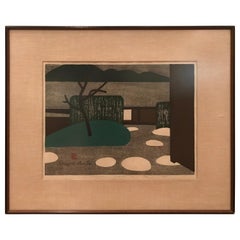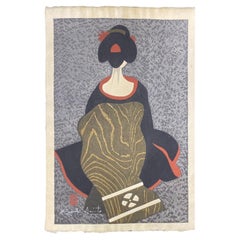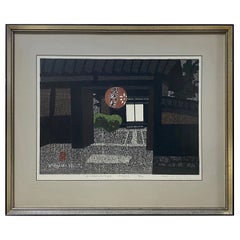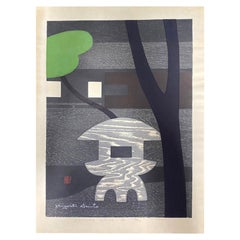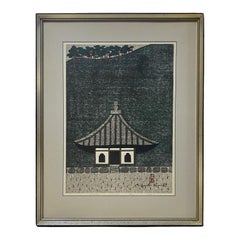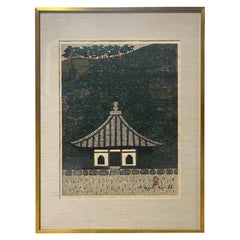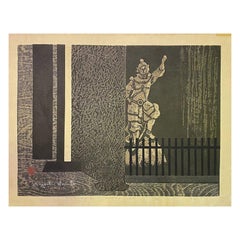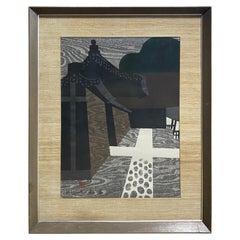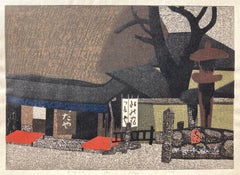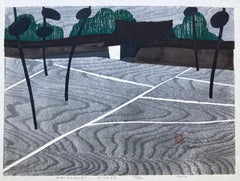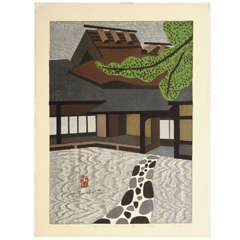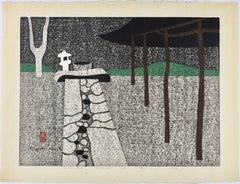Kyoto Saito
Vintage 1950s Japanese Prints
Paper
Vintage 1960s Japanese Showa Prints
Paper
Vintage 1960s Japanese Showa Prints
Paper
Vintage 1960s Japanese Showa Prints
Paper
Vintage 1960s Japanese Showa Prints
Glass, Wood, Paper
Vintage 1960s Japanese Showa Prints
Glass, Wood, Paper
Vintage 1960s Japanese Showa Prints
Paper
Vintage 1960s Japanese Showa Prints
Paper
Vintage 1960s Japanese Showa Prints
Paper
1960s Modern Landscape Prints
Woodcut, Color
1950s Modern Landscape Prints
Woodcut
1960s Modern Landscape Prints
Paper, Woodcut
1960s Landscape Prints
Woodcut, Adhesive
1960s Contemporary Landscape Prints
Woodcut
20th Century Modern Prints and Multiples
Woodcut
Recent Sales
Vintage 1960s Japanese Prints
1960s Folk Art Landscape Prints
Mulberry Paper, Woodcut
20th Century Modern Interior Prints
Woodcut
1960s Modern Figurative Paintings
Woodcut
1960s Contemporary Landscape Prints
Archival Paper
1960s Contemporary Landscape Prints
Paper, Ink
1960s Other Art Style Figurative Prints
Paper, Ink, Color, Woodcut
Vintage 1950s Japanese Showa Prints
Paper
Vintage 1960s Japanese Showa Prints
Paper
Vintage 1960s Japanese Showa Prints
Paper
Vintage 1950s Showa Prints
Paper
Vintage 1950s Japanese Modern Prints
Paper
Vintage 1970s Japanese Showa Prints
Paper
Vintage 1960s Japanese Showa Prints
Glass, Wood, Paper
Vintage 1960s Japanese Contemporary Art
Paper
Vintage 1960s Japanese Showa Prints
Paper
Vintage 1960s Japanese Showa Prints
Paper
Vintage 1960s Japanese Showa Prints
Paper
Vintage 1960s Japanese Modern Prints
Paper
Vintage 1960s Japanese Showa Prints
Paper
Vintage 1960s Japanese Showa Prints
Paper
Vintage 1950s Japanese Showa Prints
Paper
Vintage 1960s Japanese Showa Prints
Paper
1960s Modern Abstract Prints
Archival Paper, Woodcut
1960s Modern Figurative Prints
Archival Paper, Woodcut
1960s Modern Landscape Prints
Woodcut
Vintage 1960s Japanese Decorative Art
1960s Modern Figurative Prints
Woodcut
20th Century Modern Interior Prints
Woodcut
Vintage 1960s Japanese Decorative Art
Paper
People Also Browsed
1930s Showa Landscape Prints
Woodcut
Vintage 1960s Japanese Mid-Century Modern Prints
Paper
Vintage 1940s Japanese Showa Prints
Paper
20th Century Japanese Edo Prints
Paper
Vintage 1980s Modern Prints
Paper
Vintage 1960s Japanese Showa Prints
Paper
Vintage 1930s Japanese Showa Prints
Wood, Paper
Vintage 1930s Japanese Showa Prints
Wood, Paper
Vintage 1950s Japanese Mid-Century Modern Prints
Paper
Vintage 1970s Japanese Mid-Century Modern Prints
Paper
1850s Modern Portrait Prints
Woodcut, Paper
Antique Mid-19th Century Japanese Edo Prints
Paper
Early 2000s Showa Portrait Prints
Giclée
20th Century Modern Landscape Prints
Woodcut
Early 2000s Showa Portrait Prints
Giclée
Early 20th Century Japanese Prints
Paper
Kyoto Saito For Sale on 1stDibs
How Much is a Kyoto Saito?
Kiyoshi Saitō for sale on 1stDibs
Kiyoshi Saito was born in Fukushima Prefecture in 1907. At the age of five, he moved to Otaru in Hokkaido, where he would come to serve as an apprentice to a sign painter. Saito became infatuated with art after studying drawing with Gyokusen Narita and moved to Tokyo in 1932 to study Western-style painting at the Hongo Painting Institute. He began experimenting with woodblock prints and exhibiting his works with Nihon Hanga Kyōkai in 1936. Saito mainly worked in oil painting until his invitation from Tadashige Ono to join the Zokei Hanga Kyokai in 1938, at which time Saito made the woodblock print his primary medium. He worked with the Asahi Newspaper Company in 1943, where he met Kōshirō Onchi. This chance encounter led to an invitation to Ichimoku Kai and membership to Nihon Hanga Kyōkai in 1944.
Saito’s printmaking career was put on hold due to the war. During the occupation, he sold his first print in an exhibit with fellow artists Un’ichi Hiratsuka and Hide Kawanishi. In 1948, Saito exhibited at the Salon Printemps, an event sponsored by Americans for Japanese Artists. At the Sao Paulo Biennale of 1951, Saito won first place for his print Steady Gaze. In competition with Japanese oil painting and sculpture, this was a turning point for Japanese printmakers: For the first time in Japanese history, prints overtook painting. This achievement roused the Japanese art establishment. In 1956, Saito was sponsored by the state department and the Asia Foundation to travel and exhibit around the United States and Europe. As a sōsaku-hangaartist, Saito’s prints are self-drawn, self-carved and self-printed. His early works are distinguished by an attention to realism and three-dimensionality. As his style evolved, his prints became flattened and two-dimensional, featuring strong and refined designs with color and texture. Kiyoshi Saito passed away in 1997.
